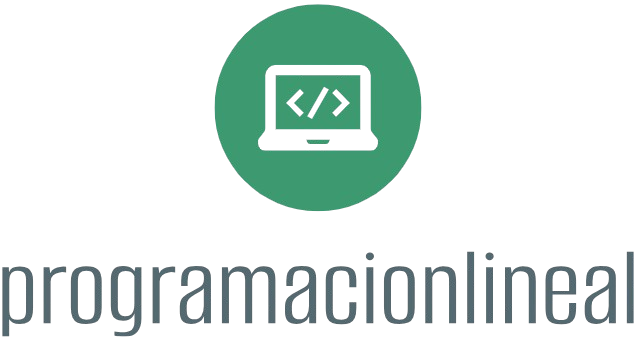Web scraping is the process of extracting data from websites using software or scripts. Python is an excellent language for web scraping due to its simplicity, readability, and the availability of powerful libraries. In this guide, we’ll cover the basics of web scraping using Python and show you how to extract data from a website.
1. Set Up Your Environment
To get started with web scraping in Python, you’ll need to install a few essential libraries:
- Requests: To send HTTP requests and receive responses from web servers.
- BeautifulSoup: To parse HTML and XML documents and extract data from them.
- Selenium: (Optional) To automate browser interactions, useful for scraping dynamic content loaded with JavaScript.
You can install these libraries using pip:
bash
Copy code
pip install requests pip install beautifulsoup4 pip install selenium
2. Understand the Legal and Ethical Aspects
Before you start web scraping, make sure to:
- Check the website’s robots.txt file: This file specifies which parts of the website can be crawled or scraped by automated bots. Always respect these rules.
- Review the website’s Terms of Service: Some websites prohibit scraping without explicit permission. Ensure you comply with their terms to avoid legal issues.
- Avoid Overloading the Server: Be mindful of the website’s server load. Use delays or throttling to prevent sending too many requests in a short period.
3. Choose Your Target Website and Identify the Data to Scrape
Pick a website you want to scrape and identify the specific data you need. This could be product prices, headlines, user reviews, or other content. You’ll need to inspect the HTML structure of the page to locate the elements containing the data you want.
- Inspect the HTML: Use your browser’s developer tools (usually accessed via right-click > “Inspect” or “Inspect Element”) to view the HTML structure and identify the tags, IDs, or classes containing the desired data.
4. Sending HTTP Requests with Requests Library
First, you’ll use the requests library to send an HTTP request to the target website and retrieve the page’s content.
Here is a basic example of how to fetch a webpage:
python
Copy code
import requests # Send an HTTP GET request to the website url = ‘https://example.com’ response = requests.get(url) # Check if the request was successful if response.status_code == 200: print(“Successfully fetched the page!”) page_content = response.text else: print(f”Failed to retrieve the page. Status code: {response.status_code}”)
5. Parsing the HTML with BeautifulSoup
Once you have the HTML content, use BeautifulSoup to parse it and extract the desired data.
python
Copy code
from bs4 import BeautifulSoup # Create a BeautifulSoup object soup = BeautifulSoup(page_content, ‘html.parser’) # Find specific elements by tag, class, or id title = soup.find(‘title’).text # Get the text inside the <title> tag all_paragraphs = soup.find_all(‘p’) # Get all <p> tags print(“Page Title:”, title) for p in all_paragraphs: print(p.text)
6. Extracting Data Using BeautifulSoup Methods
Here are some commonly used BeautifulSoup methods for extracting data:
- find(tag, attributes): Finds the first occurrence of a tag with the specified attributes.
- find_all(tag, attributes): Finds all occurrences of a tag with the specified attributes.
- get(attribute_name): Retrieves the value of an attribute (e.g., href for a link).
- text: Extracts the inner text of an element.
Example of extracting all links from a webpage:
python
Copy code
# Extract all <a> tags links = soup.find_all(‘a’) for link in links: # Get the href attribute of each <a> tag href = link.get(‘href’) print(href)
7. Scraping Dynamic Content with Selenium
Some websites load content dynamically using JavaScript, which cannot be accessed with requests alone. In such cases, you can use Selenium to automate a web browser and interact with the page.
First, set up Selenium with a browser driver (like ChromeDriver):
bash
Copy code
pip install selenium
Then, write a script to scrape a dynamic page:
python
Copy code
from selenium import webdriver from selenium.webdriver.common.by import By from selenium.webdriver.chrome.service import Service # Initialize the WebDriver (make sure to have the ChromeDriver installed and in PATH) service = Service(‘path/to/chromedriver’) driver = webdriver.Chrome(service=service) # Open the website driver.get(‘https://example.com’) # Wait for elements to load and extract data element = driver.find_element(By.ID, ‘element-id’) print(element.text) # Close the browser driver.quit()
8. Handling Common Challenges
Web scraping can present several challenges. Here are some tips for overcoming them:
- Handling Pagination: Use a loop to navigate through pages by finding the “Next” button and iterating through URLs.
- Dealing with CAPTCHAs: Avoid sending too many requests rapidly. Use proxies or rotate user agents if needed.
- JavaScript-Rendered Content: Use Selenium or a headless browser to handle dynamic content.
9. Saving the Scraped Data
Once you have extracted the data, you can save it in various formats like CSV, JSON, or databases for further analysis:
python
Copy code
import csv # Save data to a CSV file with open(‘data.csv’, ‘w’, newline=”) as file: writer = csv.writer(file) writer.writerow([‘Title’, ‘Link’]) for link in links: writer.writerow([link.text, link.get(‘href’)])
10. Final Tips for Effective Web Scraping
- Respect Rate Limits: Use time.sleep() to wait between requests to avoid being blocked.
- Rotate User Agents: Mimic different browsers by rotating user agents to avoid detection.
- Use Proxies: Use proxies to distribute requests from different IPs.
Conclusion
Web scraping with Python is a powerful technique for gathering data from websites. By using libraries like Requests, BeautifulSoup, and Selenium, you can efficiently extract and parse data for various applications. Always ensure that you scrape responsibly, respecting legal and ethical guidelines. With practice, you’ll become proficient in navigating web data and utilizing it effectively for your projects.











